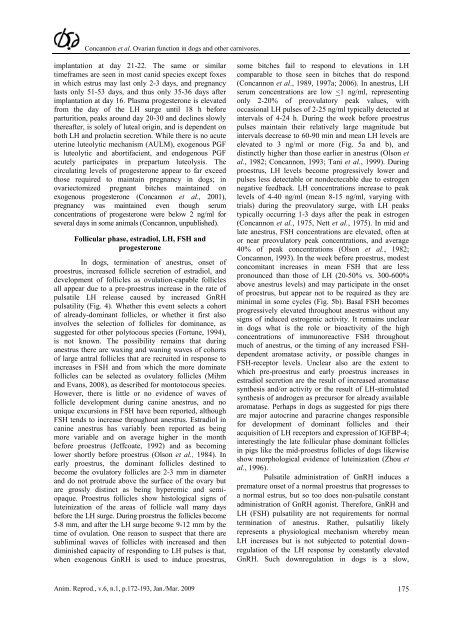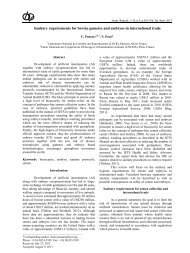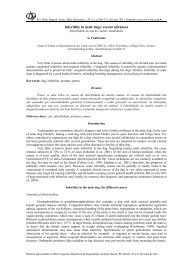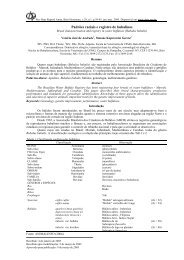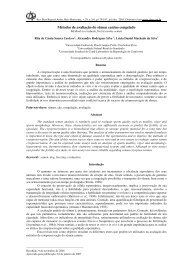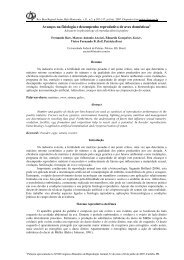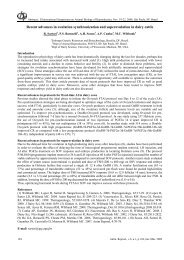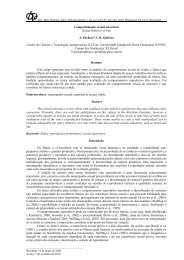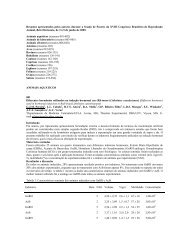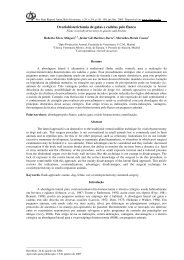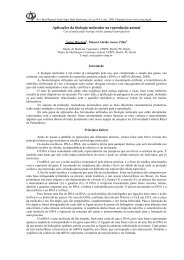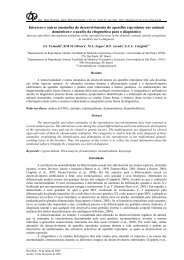Endocrine control of ovarian function in dogs and other carnivores
Endocrine control of ovarian function in dogs and other carnivores
Endocrine control of ovarian function in dogs and other carnivores
You also want an ePaper? Increase the reach of your titles
YUMPU automatically turns print PDFs into web optimized ePapers that Google loves.
Concannon et al. Ovarian <strong>function</strong> <strong>in</strong> <strong>dogs</strong> <strong>and</strong> <strong>other</strong> <strong>carnivores</strong>.<br />
implantation at day 21-22. The same or similar<br />
timeframes are seen <strong>in</strong> most canid species except foxes<br />
<strong>in</strong> which estrus may last only 2-3 days, <strong>and</strong> pregnancy<br />
lasts only 51-53 days, <strong>and</strong> thus only 35-36 days after<br />
implantation at day 16. Plasma progesterone is elevated<br />
from the day <strong>of</strong> the LH surge until 18 h before<br />
parturition, peaks around day 20-30 <strong>and</strong> decl<strong>in</strong>es slowly<br />
thereafter, is solely <strong>of</strong> luteal orig<strong>in</strong>, <strong>and</strong> is dependent on<br />
both LH <strong>and</strong> prolact<strong>in</strong> secretion. While there is no acute<br />
uter<strong>in</strong>e luteolytic mechanism (AULM), exogenous PGF<br />
is luteolytic <strong>and</strong> abortifacient, <strong>and</strong> endogenous PGF<br />
acutely participates <strong>in</strong> prepartum luteolysis. The<br />
circulat<strong>in</strong>g levels <strong>of</strong> progesterone appear to far exceed<br />
those required to ma<strong>in</strong>ta<strong>in</strong> pregnancy <strong>in</strong> <strong>dogs</strong>; <strong>in</strong><br />
ovariectomized pregnant bitches ma<strong>in</strong>ta<strong>in</strong>ed on<br />
exogenous progesterone (Concannon et al., 2001),<br />
pregnancy was ma<strong>in</strong>ta<strong>in</strong>ed even though serum<br />
concentrations <strong>of</strong> progesterone were below 2 ng/ml for<br />
several days <strong>in</strong> some animals (Concannon, unpublished).<br />
Follicular phase, estradiol, LH, FSH <strong>and</strong><br />
progesterone<br />
In <strong>dogs</strong>, term<strong>in</strong>ation <strong>of</strong> anestrus, onset <strong>of</strong><br />
proestrus, <strong>in</strong>creased follicle secretion <strong>of</strong> estradiol, <strong>and</strong><br />
development <strong>of</strong> follicles as ovulation-capable follicles<br />
all appear due to a pre-proestrus <strong>in</strong>crease <strong>in</strong> the rate <strong>of</strong><br />
pulsatile LH release caused by <strong>in</strong>creased GnRH<br />
pulsatility (Fig. 4). Whether this event selects a cohort<br />
<strong>of</strong> already-dom<strong>in</strong>ant follicles, or whether it first also<br />
<strong>in</strong>volves the selection <strong>of</strong> follicles for dom<strong>in</strong>ance, as<br />
suggested for <strong>other</strong> polytocous species (Fortune, 1994),<br />
is not known. The possibility rema<strong>in</strong>s that dur<strong>in</strong>g<br />
anestrus there are wax<strong>in</strong>g <strong>and</strong> wan<strong>in</strong>g waves <strong>of</strong> cohorts<br />
<strong>of</strong> large antral follicles that are recruited <strong>in</strong> response to<br />
<strong>in</strong>creases <strong>in</strong> FSH <strong>and</strong> from which the more dom<strong>in</strong>ate<br />
follicles can be selected as ovulatory follicles (Mihm<br />
<strong>and</strong> Evans, 2008), as described for montotocous species.<br />
However, there is little or no evidence <strong>of</strong> waves <strong>of</strong><br />
follicle development dur<strong>in</strong>g can<strong>in</strong>e anestrus, <strong>and</strong> no<br />
unique excursions <strong>in</strong> FSH have been reported, although<br />
FSH tends to <strong>in</strong>crease throughout anestrus. Estradiol <strong>in</strong><br />
can<strong>in</strong>e anestrus has variably been reported as be<strong>in</strong>g<br />
more variable <strong>and</strong> on average higher <strong>in</strong> the month<br />
before proestrus (Jeffcoate, 1992) <strong>and</strong> as becom<strong>in</strong>g<br />
lower shortly before proestrus (Olson et al., 1984). In<br />
early proestrus, the dom<strong>in</strong>ant follicles dest<strong>in</strong>ed to<br />
become the ovulatory follicles are 2-3 mm <strong>in</strong> diameter<br />
<strong>and</strong> do not protrude above the surface <strong>of</strong> the ovary but<br />
are grossly dist<strong>in</strong>ct as be<strong>in</strong>g hyperemic <strong>and</strong> semiopaque.<br />
Proestrus follicles show histological signs <strong>of</strong><br />
lute<strong>in</strong>ization <strong>of</strong> the areas <strong>of</strong> follicle wall many days<br />
before the LH surge. Dur<strong>in</strong>g proestrus the follicles become<br />
5-8 mm, <strong>and</strong> after the LH surge become 9-12 mm by the<br />
time <strong>of</strong> ovulation. One reason to suspect that there are<br />
sublim<strong>in</strong>al waves <strong>of</strong> follicles with <strong>in</strong>creased <strong>and</strong> then<br />
dim<strong>in</strong>ished capacity <strong>of</strong> respond<strong>in</strong>g to LH pulses is that,<br />
when exogenous GnRH is used to <strong>in</strong>duce proestrus,<br />
some bitches fail to respond to elevations <strong>in</strong> LH<br />
comparable to those seen <strong>in</strong> bitches that do respond<br />
(Concannon et al., 1989, 1997a; 2006). In anestrus, LH<br />
serum concentrations are low


